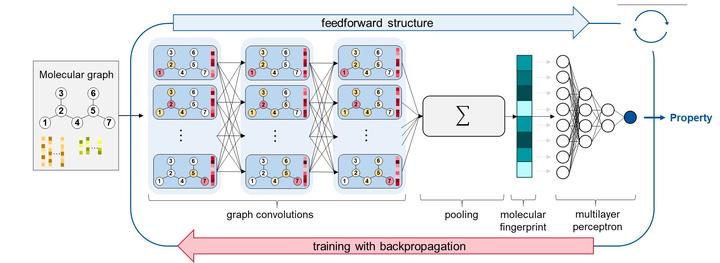Graph Neural Networks

Graph neural networks (GNNs) are a machine learning method that has shown promising results for the prediction of structure-property relationships.
Prediction of molecular properties is an important and challenging task for which quantitative structure-property relationship (QSPR) models are frequently employed. Recently, GNNs have shown promising performance compared to QSPR methods for this task. GNNs utilize a graph representation of molecules, where atoms correspond to nodes and bonds to edges containing information about the molecular structure. More specifically, GNNs learn physicochemical properties as a function of the molecular graph in a supervised learning setup using a backpropagation algorithm. This end-to-end learning approach eliminates the need for the selection of molecular descriptors or structural groups, as it learns optimal fingerprints through graph convolutions and maps the fingerprints to the physicochemical properties by deep learning. We develop GNN models for various molecular properties.
Key publications
- Schweidtmann, A. M., Rittig, J. G., König, A., Grohe, M., Mitsos, A., & Dahmen, M. (2020). Graph neural networks for prediction of fuel ignition quality. Energy & fuels, 34(9), 11395-11407. [Schweidtmann et al., 2020]